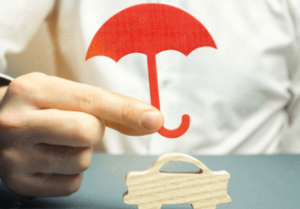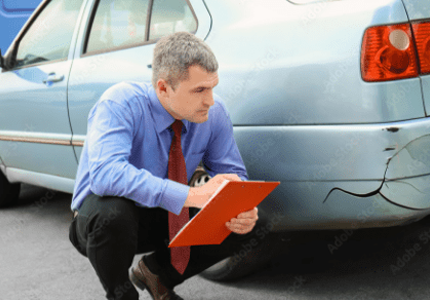How the Pandemic Affected the Auto Insurance Industry

It’s safe to say that the COVID-19 pandemic has affected every facet of the economy, and the auto insurance industry is no exception.
As coronavirus cases rose across the United States in early 2020, leading to an economic crash and widespread lock-downs, most insurers responded with policy adjustments, like offering discounts on monthly premiums and halting cancellations for non-payment.
But while these programs have largely ended, many people are still recovering financially from the economic fallout. In fact, among those who say their finances have worsened during the pandemic, 44% believe it will take three or more years to get back to where they were before it began.
Let’s take a closer look at how the pandemic has affected the auto insurance industry, and what you can do to take advantage of lasting changes.
Changes to Auto Insurance
So what changes have auto insurance companies made in response to COVID-19, and are they still in effect today?
Early in the pandemic, as many people tightened their budgets and cut back on driving, most auto insurers offered some form of payment relief or extended due dates to ease the financial burden for their customers.
For example, Allstate refunded customers around 15% of their premiums for several months in early 2020, and offered policyholders the option to defer up to two consecutive payments without penalty. The company also provided automatic coverage for customers who drove their personal vehicles to deliver food, medicine, or other commercial goods throughout the COVID-19 state of emergency.
Farmers Insurance, another one of the largest auto insurers in the U.S., provided customers a 25% premium reduction in April 2020 and a 15% reduction in May, in addition to a pause on cancellations due to non-payment.
However, many of these insurance relief measures were required by states when they formally declared COVID-19 a public health emergency. As these emergency orders expired, most of the benefits for auto insurance policyholders ended too. Be sure to check your state’s COVID-19 status to find out if there are any remaining auto insurance relief extensions where you’re located.
Don’t Forgo Auto Insurance
While many people are now working from home and driving less, everyone with a vehicle is still legally required to hold insurance in accordance with their state’s laws. This held true even in the early days of the pandemic, when some states had stay-at-home orders in place and car insurance felt less necessary.
Additionally, allowing a lapse in auto insurance coverage could lead to higher premiums when seeking insurance renewal later. So, even if you’re still feeling the financial squeeze from the COVID-19 crisis, don’t cancel your auto insurance unless you are prepared to pay the price down the road.
How to Save Money on Car Insurance
If you’re driving your car less these days, or simply looking for ways to save a few bucks on your insurance policy, there are some options.
As mentioned earlier, find out if your insurance company offers any kind of payment relief or deferment, or if they’re still offering a temporary suspension on policy cancellations. Some insurers may also offer you a lower premium if you are no longer commuting to work or driving long distances on a regular basis.
Remember, while almost every state requires drivers to hold car insurance, the minimum requirements differ. If you’re trying to cut costs in your insurance plan, find out what the minimum requirements are in your state and consider adjusting your policy accordingly.
For example, Florida requires a minimum of $10,000 for personal injury protection (PIP) and $10,000 of property damage liability (PDL). PIP covers medical expenses caused by an accident, regardless of who was at fault. PDL covers damage to another person’s property caused by you or someone else driving your car.
In New York, however, the requirements are different. Drivers are required to have several types of coverage, including $25,000 for bodily injury per person, $50,000 for bodily injury per accident, $10,000 for property damage, and $50,000 for personal injury protection coverage (a significant increase from Florida’s minimum PIP).
As you can see, the requirements can vary significantly from state to state.
What Coverage Can I Drop?
Auto insurance companies offer a wealth of coverage options, so you can fine-tune your plan to fit your needs. If you can afford it, it’s best to go beyond the minimum requirements for your insurance plan to ensure you’re protected in case something unexpected happens on the road, but you can drop some coverage to keep costs down, if needed.
Here is an overview of a few typical auto insurance coverage options so you have a better idea of what you may or may not need:
Liability coverage
You’ll often see liability coverage come in a three-tier form: 50/100/50, for example. This gives the coverage breakdown for individual injuries, total injuries, and property damage.
In our 50/100/50 example, the policy covers $50,000 for individual injuries, $100,000 for total injuries, and $50,000 for property damage, which generally includes buildings, cars, and objects.
Every state requires some form of liability coverage for insured drivers.
Comprehensive coverage
This type of coverage is optional and can cover things like theft, vandalism, weather, or other perils stated in your policy. It can help pay for your vehicle’s repair or replacement, and typically has an adjustable deductible.
Collision
If you’re involved in an accident with another vehicle, or if you hit an object like a gate or mailbox, this type of coverage can help repair or replace your vehicle. It also comes with a deductible and is optional.
Uninsured and underinsured motorist coverage
If you happen to be involved in an accident with another driver who does not have auto insurance, this coverage can help pay for vehicle repairs and even your medical bills. If the driver of that vehicle is underinsured and doesn’t have enough coverage to pay for your bills, this type of insurance can bridge the gap. Some states require this coverage and some do not.
Other Options to Cut Costs
Besides adjusting your insurance policy, you can also opt to switch to a more affordable auto insurance company. There are many factors that can affect the price of car insurance, like moving to a new location, buying a new car, getting married, or a change in your credit score, to name a few.
Some of these factors can increase your premium, while others (like improving your credit score or getting married) can help lower it.
The first step is to discuss your policy with your current insurer to see if they offer any discounts or if they can review your policy to find a way to reduce it. They may even offer a member loyalty discount if you’ve been with them for a while.
If that doesn’t help, start getting quotes from other insurance companies to find the best rate. Sometimes even telling your insurance that you plan to switch companies will get them to offer you a discounted rate.
It’s also worth keeping in mind that you can switch auto insurance providers at any time — just check with your insurer first to see if they charge a cancellation fee.
Final Thoughts
While the COVID-19 crisis has been steadily improving around the country, there are ways you can save money if you’re still feeling some financial strain.
If your state has an emergency order in place due to the pandemic, it’s possible auto insurance companies will still offer some form of financial relief or payment deferrals. Even if your state hasn’t declared an ongoing emergency, it’s worth checking to see what your insurance provider (and others) are offering.


